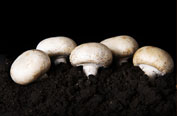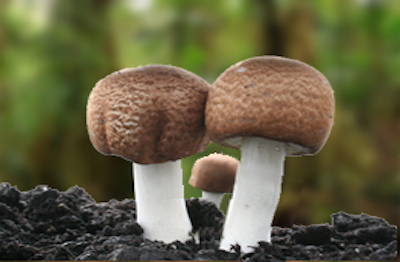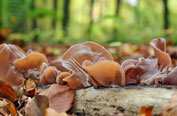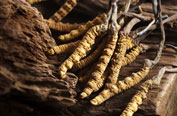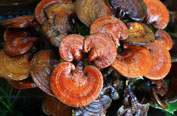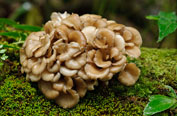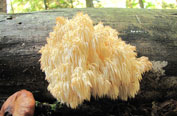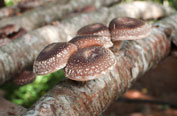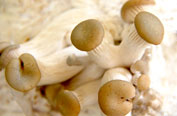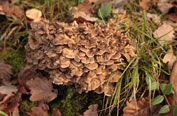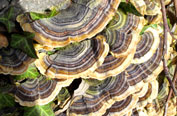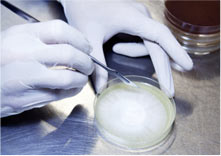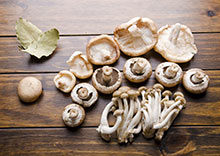
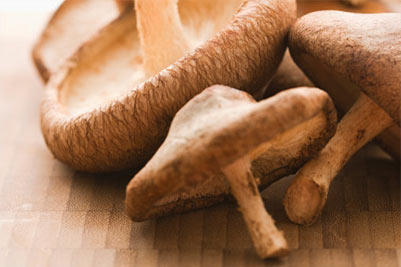
Mycorrhiza Tips and Products
Agriculture: Available Phosphorus and Mycorrhiza Inoculation:
High levels of available phosphorus (at the time of inoculation) do not harm the mycorrhiza, but they can slow down the germination process. One of the main functions of mycorrhiza is to extract phosphorus from the soil. If there is already a high level of phosphorus available to the plant, the mycorrhizas tend be slower or lazier, so to speak, they have no reason to get to work. When inoculating with mycorrhiza it is best to keep the available phosphorus levels around a more natural level. If necessary, you can increase those levels 3 weeks or so after inoculation without an effect on the mycorrhiza, but bear in mind that the mycorrhiza should now be helping your plants more effectively and efficiently use those nutrients already in the soil.
Some good rules of thumb for available phosphorus when inoculating:
Bray test: 70 PPM (parts per million) available is ideal. NPK analysis of 10 or below normally preferred on “P”. Time release and organic fertilizers normally the best. Add mycorrhiza, allow 3 weeks or more to germinate, then apply fertilizers with high phosphorus values
Recommended Products: Mycorrhiza Granular, Mycorrhiza Soluble, Mycorrhiza Seed Inoculant
Erosion Control & Restoration:
Granular can be used in hydroseeding but the Seed Inoculant Powder disperses better in water and covers the seed and area to be treated most efficiently. Keeping material agitated during applications is recommended.
Recommended Products: Mycorrhiza Granular, Mycorrhiza Root Dip Gel, Mycorrhiza Seed Inoculant
Forestry: Apply early in the growth cycle, after sowing and prior to germination, when fertility levels are still low. Late in the growth cycle, when seedlings are hardened off, or fertility inputs are decreased. Add mycorrhiza products at the last watering for container plants to promote mycorrhiza formation in the field environment.
For Irrigation Systems: Pre-wet growth medium, then apply the spores and add additional water to leach spores into root zone. Avoid fungicides with PCNB or Benlate. Avoid fertilizers that release nutrients quickly. Mycorrhizal fungi are generally not harmed by herbicides, nematicides or insecticides.
Recommended Products: Mycorrhiza Soluble, Mycorrhiza Root Dip Gel, Mycorrhiza Granular
Arborists/Landscape Architects: Available Phosphorus and Mycorrhiza Inoculation:
High levels of available phosphorus (at the time of inoculation) do not harm the mycorrhiza, but they can slow down the germination process. One of the main functions of mycorrhiza is to extract phosphorus from the soil. If there is already a high level of phosphorus available to the plant, the mycorrhizas tend be slower or lazier, so to speak, they have no reason to get to work. When inoculating with mycorrhiza it is best to keep the available phosphorus levels around a more natural level. If necessary, you can increase those levels 3 weeks or so after inoculation without an effect on the mycorrhiza, but bear in mind that the mycorrhiza should now be helping your plants more effectively and efficiently use those nutrients already in the soil.
Some good rules of thumb for available phosphorus when inoculating: Bray test: 70 PPM (parts per million) available is ideal. NPK analysis of 10 or below normally preferred on “P”. Time release and organic fertilizers normally the best. Add mycorrhiza, allow 3 weeks or more to germinate, then apply fertilizers with high phosphorus values.
Recommended Products: Mycorrhiza Granular, Mycorrhiza Root Dip Gel, Mycorrhiza Soluble, Mycorrhiza Seed Inoculant
Horticulture Tools and Tips: Available Phosphorous and Mycorrhiza Inoculation:
High levels of available phosphorus (at the time of inoculation) do not harm the mycorrhiza, but they can slow down the germination process. One of the main functions of mycorrhiza is to extract phosphorus from the soil. If there is already a high level of phosphorus available to the plant, the mycorrhizas tend be slower or lazier, so to speak, they have no reason to get to work. When inoculating with mycorrhiza it is best to keep the available phosphorus levels around a more natural level. If necessary, you can increase those levels 3 weeks or so after inoculation without an effect on the mycorrhiza, but bear in mind that the mycorrhiza should now be helping your plants more effectively and efficiently use those nutrients already in the soil.
Some good rules of thumb for available phosphorus when inoculating: Bray test: 70 PPM (parts per million) available is ideal. NPK analysis of 10 or below normally preferred on “P”. Time release and organic fertilizers normally the best. Add mycorrhiza, allow 3 weeks or more to germinate, then apply fertilizers with high phosphorus values.
Recommended Products: Mycorrhiza Granular, Mycorrhiza Soluble, Mycorrhiza Seed Inoculant
Hydroponics:
Mix Mycorrhiza directly with soil-less media or add directly to nutrient solution. Maintain pH between 5.5 – 7.5 for best results. Maintain available phosphorus level at less than 70 ppm. Use mycorrhiza inocula that contain varied species for the best response. Use aeration in the system, or ebb and flow, as these organisms are aerobic. Once plants are effectively colonized, fertilizers can be reduced by 30 %. Best results are obtained with multiple applications throughout the growth cycle. After flowering has begun your mycelial network should already be established and there is no reason to continue the applications of mycorrhizal fungi.
Recommended Products: Mycorrhiza Soluble
Turf / Lawn: Available Phosphorous and Mycorrhiza Inoculation:
High levels of available phosphorus (at the time of inoculation) do not harm the mycorrhiza, but they can slow down the germination process. One of the main functions of mycorrhiza is to extract phosphorus from the soil. If there is already a high level of phosphorus available to the plant, the mycorrhizas tend be slower or lazier, so to speak, they have no reason to get to work. When inoculating with mycorrhiza it is best to keep the available phosphorus levels around a more natural level. If necessary, you can increase those levels 3 weeks or so after inoculation without an effect on the mycorrhiza, but bear in mind that the mycorrhiza should now be helping your plants more effectively and efficiently use those nutrients already in the soil.
Some good rules of thumb for available phosphorus when inoculating: Bray test: 70 PPM (parts per million) available is ideal. NPK analysis of 10 or below normally preferred on “P”. Time release and organic fertilizers normally the best. Add mycorrhiza, allow 3 weeks or more to germinate, then apply fertilizers with high phosphorus values.
Recommended Products: Mycorrhiza Granular, Mycorrhiza Seed Inoculant

